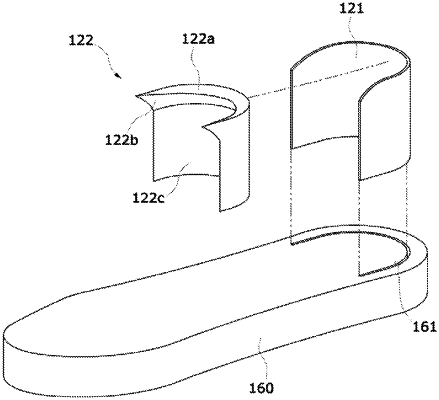| CPC A43B 23/08 (2013.01) | 14 Claims |

|
1. An easy-to-wear functional shoe having a shoe heel and a sole, the functional shoe comprising:
a support member that supports the shoe heel; and
an elastic member that is coupled to an upper portion of the support member and protrudes inward from the functional shoe,
wherein the support member is substantially perpendicularly directly coupled to the sole at a lower end of the support member,
wherein an amount of a portion of the elastic member protruded from the support member gradually decreases toward side edges of the shoe heel in a plan view of the functional shoe,
wherein the support member has a semicircular arch shape surrounding the shoe heel,
wherein an entire region of the lower end of the support member is coupled to a slot provided in the sole,
wherein the elastic member includes:
a wearing surface that is inclined inward in a direction toward a lower side of the functional shoe; and
a seating surface that is inclined outward in a direction toward the lower side, and surrounds a foot heel,
wherein an upper end of the wearing surface contacts the support member,
a lower end of the wearing surface contacts an upper end of the seating surface, and
a lower end of the seating surface contacts the support member,
wherein the elastic member further includes a protective surface extending downward from both ends of left and right sides of the seating surface, and
wherein an angle formed between the wearing surface and a horizontal line, which is parallel to the ground and passes through a contact point of the wearing surface and the searing surface is smaller than an angle formed between the seating surface and the horizontal line.
|